How to CNC Machine a Patterned Surface: A Step-by-Step Guide
CNC machining has revolutionized the manufacturing industry, enabling precise and efficient production of various parts and surfaces. One common application is machining patterned surfaces, which require careful planning and execution. In this article, we will explore the essential steps and considerations to successfully CNC machine a patterned surface.Step 1: Design and CAD Modeling:Before starting the machining process, it is crucial to have a well-defined design and a 3D CAD model of the patterned surface. This allows for accurate visualization and ensures that the desired pattern is translated effectively during the machining process.Step 2: Material Selection:Choose the appropriate material for your patterned surface, considering factors such as strength, durability, and compatibility with CNC machining. Common materials include metals like aluminum and stainless steel, as well as plastics such as acrylic and nylon.Step 3: Toolpath Generation:Using CAM (Computer-Aided Manufacturing) software, generate toolpaths that will guide the CNC machine in machining the patterned surface. Consider the type of tooling required, such as end mills or ball nose cutters, and optimize the toolpaths for efficient material removal and surface finish.Step 4: Machine Setup:Prepare the CNC machine by securing the chosen material and installing the necessary tooling. Ensure proper alignment and calibration to achieve accurate machining results. Additionally, set the appropriate cutting parameters, such as spindle speed and feed rate, based on the material and tooling being used.Step 5: Machining Process:Start the CNC machine and carefully monitor the machining process. The machine will follow the programmed toolpaths, removing excess material and creating the desired pattern on the surface. Maintain a safe and controlled environment during the process, following all recommended safety guidelines.Step 6: Finishing and Quality Check:Once the machining is complete, inspect the patterned surface for any imperfections or deviations from the design. Perform any necessary post-machining processes, such as deburring or sanding, to achieve the desired surface finish. Ensure that the pattern is accurately replicated and meets the required specifications.Conclusion:CNC machining of patterned surfaces can be a complex but rewarding process. By following the steps outlined in this guide, you can successfully create intricate patterns on various materials with precision and efficiency. Remember to prioritize safety, proper planning, and attention to detail to achieve optimal results.
How to CNC Machine a Patterned Surface: A Step-by-Step Guide
Shenzhen Tuowei Model Technologies Co., Ltd.2023-11-11 11:54:38
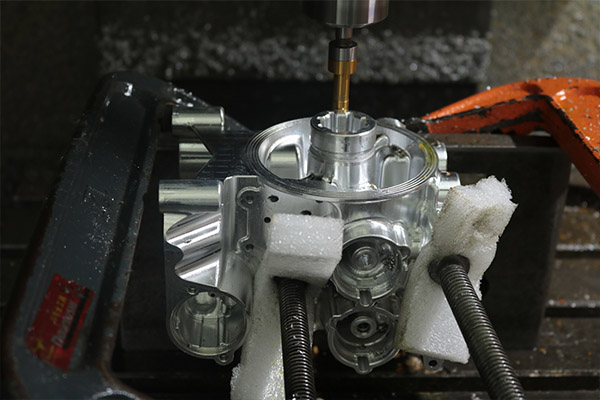
How to Perform Quality Inspection in CNC Machining
Quality inspection is an essential aspect of CNC (Computer Numerical Control) machining to ensure the accuracy and precision of machined parts. This article will guide you through the process of performing quality inspection in CNC machining, helping you maintain high-quality standards in your production.1.Establish Inspection Criteria:Define the inspection criteria based on your project requirements and specifications. This includes dimensions, tolerances, surface finish, and any other critical features that need to be checked during the inspection process.2.Inspection Tools:Select the appropriate inspection tools for your CNC machining process. Common tools used in CNC inspection include calipers, micrometers, height gauges, thread gauges, and CMM (Coordinate Measuring Machine). Ensure these tools are properly calibrated and in good working condition.3.First Article Inspection (FAI):Perform a comprehensive inspection on the first article produced in a CNC machining process. This involves measuring and verifying all critical dimensions and features against the design drawings or CAD models. Document any deviations or non-conformities for future reference.4.In-Process Inspection:Conduct periodic inspections during the machining process to monitor part quality. This can include inspecting critical dimensions, surface finish, hole sizes, and any other features that require verification. Regular inspection ensures any issues are identified and corrected early in the manufacturing process.5.Final Inspection:Perform a final inspection on the completed parts before they are sent for further processing or assembly. This includes verifying all critical dimensions, checking surface finish, and ensuring the parts meet the specified tolerances. Inspect the parts using appropriate tools and compare the measurements with the inspection criteria.6.Statistical Process Control (SPC):Implement SPC techniques to monitor and control the CNC machining process. Use control charts to track key process parameters and identify any variations that may impact part quality. SPC helps in detecting trends, identifying potential issues, and maintaining process stability.7.Documentation and Reporting:Document the inspection results for each part, including measurements, inspection date, and any deviations from the inspection criteria. This documentation serves as a record of quality control and can be used for traceability and process improvement purposes.8.Continuous Improvement:Regularly review the inspection process and results to identify areas for improvement. Analyze any recurring issues or deviations and take corrective actions to prevent their recurrence. Continuously refine the inspection criteria and techniques to enhance the overall quality of CNC machining.Conclusion:Quality inspection plays a vital role in CNC machining to ensure the accuracy and precision of machined parts. By following the steps outlined in this article, you can effectively perform quality inspections in CNC machining, maintaining high-quality standards and meeting customer requirements. Prioritize the use of appropriate inspection tools, establish clear inspection criteria, and embrace continuous improvement to enhance the quality control process.
How to Perform Quality Inspection in CNC Machining
Shenzhen Tuowei Model Technologies Co., Ltd.2023-11-11 11:46:34
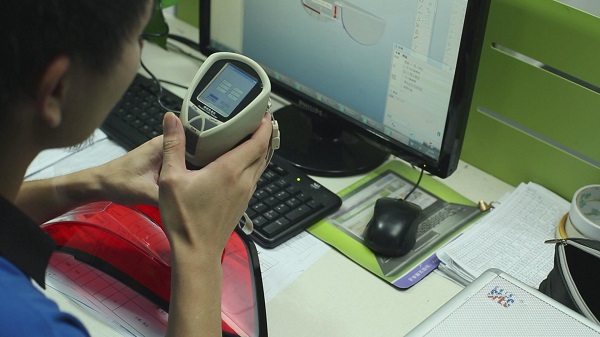
How to choose the right digital level meter?
With the development of industrial production, the measurement and control of liquid level is becoming more and more important, involving production efficiency, product quality, safety and environmental protection. In order to meet the needs of different industrial occasions of liquid level measurement, various types of liquid level meter came into being. Among them, digital level gauge is a digital display technology to measure the liquid level of the instrument, with intuitive display, high precision, stable and reliable, strong anti-interference ability, etc., widely used in electric power, metallurgy, chemical industry, food, brewing, pharmaceuticals, machinery and equipment, sewage treatment and other fields. This article will introduce several types of digital level meter and its principle, characteristics and applications.There are various types of digital level meters, which can be classified into hydrostatic, ultrasonic, guided pulse, etc. according to different measuring principles and applications.Hydrostatic digital level gauge is based on the principle that the measured static pressure of the liquid is proportional to the height of the liquid, and adopts isolated diffusion silicone sensitive element or ceramic capacitive pressure sensitive sensor to convert the static pressure into electric signal, and then after temperature compensation and linear correction, it will be transformed into a standard electric signal (generally 4-20mA/1-5VDC), which can be connected to meter, recorder, computer, PLC program controller or alarm. etc. Hydrostatic digital level meter is suitable for liquid level measurement of conventional viscous, weakly corrosive, fluid liquid with scale impurities.Ultrasonic digital level gauge is to use ultrasonic transmitter to transmit ultrasonic waves to the measured liquid, and then receive the reflected ultrasonic signals, according to the ultrasonic propagation speed in the air and the time difference between the transmission and reception, calculate the distance of the liquid surface from the transmitter, so as to get the height of the liquid level. Ultrasonic digital level meter has the characteristics of non-contact, non-pollution, easy installation, simple maintenance, etc. It is suitable for different material targets, and is not affected by color or gloss.Guided Pulse Digital Level Gauge utilizes the microwave transmitter on the guided wave conduit to transmit microwave pulses to the measured liquid, and then receives the reflected microwave pulse signals, and according to the propagation speed of the microwave in the conduit and the time difference between the transmission and the reception, it calculates the distance of the liquid surface from the transmitter, so as to get the height of the liquid level. The guided pulse digital level meter is characterized by large measuring range, high precision, strong anti-interference ability, etc. It is suitable for liquid level measurement of water, oil, chemicals, mucus and other liquids.In a word, digital level gauge is a kind of modern digital display technology combined with traditional measuring principle, which can meet the liquid level measurement needs of different industrial occasions. There are many types of digital level meters, according to different measurement principles and applications, they can be divided into hydrostatic, ultrasonic, guided pulse, etc. These types of digital level meters have their own advantages, disadvantages and applications. These types of digital level meters have their own advantages and disadvantages and scope of application, you need to choose the right instrument according to the actual situation. Digital level meter plays an important role in industrial production, and contributes to the improvement of production efficiency, product quality, safety and environmental protection.
How to choose the right digital level meter?
Guangdong Kaidi Energy Technology Co., Ltd.2023-11-10 17:46:57
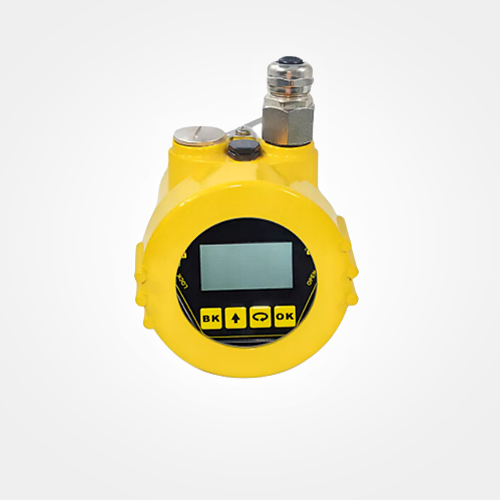
How to Machine Holes Using CNC
CNC (Computer Numerical Control) machining is a versatile and precise method for creating holes in various materials. This article will guide you through the process of machining holes using CNC, ensuring accuracy and efficiency in your hole production.1.Designing the Hole:Start by designing the hole using Computer-Aided Design (CAD) software. Specify the hole diameter, depth, and any other necessary parameters. Ensure the design aligns with your requirements and specifications.2.Material Selection:Choose the appropriate material for your project, considering factors such as hardness, machinability, and thickness. Securely fix the material onto the CNC machine to prevent movement during the machining process.3.Tool Selection:Select the appropriate cutting tool for machining the hole. Depending on the hole diameter and material, options include drills, end mills, or specialized hole-making tools. Choose a tool that is suitable for the material and can produce the desired hole dimensions.4.Programming the Machining Process:Use CNC programming software to create the machining program. Define the toolpath, hole diameter, depth, feed rate, and any other necessary parameters. The program is typically written in G-code, the language used to control CNC machines.5.Setting Up the Machining Process:Upload the machining program to the CNC machine and perform the necessary setup. This includes tool installation, workpiece alignment, tool length compensation, and setting the appropriate cutting parameters.6.Machining the Hole:Initiate the CNC machine and execute the machining program. The machine will accurately follow the programmed toolpath, gradually removing material to create the hole. The process may involve multiple passes to achieve the desired hole depth.7.Inspection and Verification:Once the machining is complete, inspect the hole for accuracy and quality. Measure the hole dimensions using appropriate measuring tools, such as calipers or micrometers, to ensure it meets the specified requirements.8.Post-Machining Processes:Depending on your project requirements, you may need to perform additional processes such as deburring or cleaning to finish the machined hole.Conclusion:CNC machining provides a reliable and efficient method for machining holes with precision. By following the steps outlined in this article, you can successfully machine holes using CNC technology. Remember to consider material selection, tooling, programming, and setup to achieve the best results. Prioritize safety and acquire the necessary training and expertise before operating CNC machines.
How to Machine Holes Using CNC
Shenzhen Tuowei Model Technologies Co., Ltd.2023-11-10 17:18:26
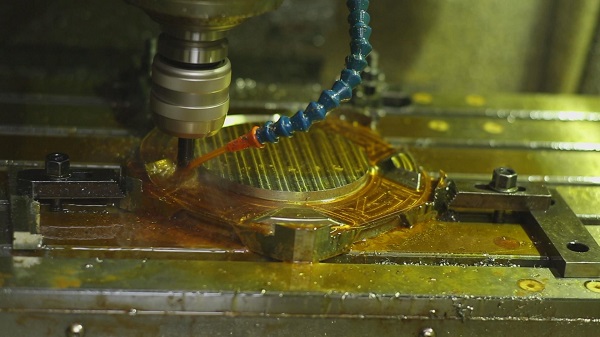
How to Machine Aluminum Sheets Using CNC
CNC (Computer Numerical Control) machining offers a precise and efficient method for machining aluminum sheets. This article will guide you through the process of machining aluminum sheets using CNC, ensuring accurate and reliable results.1.Material Selection:Aluminum is a widely used material due to its lightweight, strength, and excellent machinability. Select the appropriate grade of aluminum sheet that suits your project requirements. Ensure the sheet is securely fixed onto the CNC machine to avoid any movement during the machining process.2.Tool Selection:Choose the appropriate cutting tools for machining aluminum sheets. Carbide end mills are commonly used due to their durability and ability to withstand the demands of aluminum machining. Consider the thickness of the sheet and the specific machining operations when selecting the tools.3.Programming the Machining Process:Utilize CNC programming software to create the machining program for aluminum sheets. Define the toolpaths, cutting parameters, feed rate, and spindle speed. The program is typically written in G-code, which is the language used to control CNC machines.4.Setting Up the Machining Process:Upload the machining program to the CNC machine and perform the necessary setup. This includes installing the cutting tools, aligning the sheet, and setting the appropriate cutting parameters such as depth of cut and spindle speed.5.Machining the Aluminum Sheet:Initiate the CNC machine and execute the machining program. The machine will accurately follow the programmed toolpaths, cutting and shaping the aluminum sheet as specified. The process may include operations such as contouring, drilling, milling, or engraving.6.Inspection and Verification:Once the machining is complete, inspect the machined aluminum sheet for accuracy and quality. Use measuring tools such as calipers or micrometers to check the dimensions and ensure they meet the specified requirements.7.Post-Machining Processes:Depending on your project requirements, you may need to perform additional processes to finish the machined aluminum sheet. This could include deburring, cleaning, or surface treatments such as anodizing or powder coating.Conclusion:CNC machining is an excellent method for machining aluminum sheets with precision and efficiency. By following the steps outlined in this article, you can successfully machine aluminum sheets using CNC technology. Remember to consider material selection, tooling, programming, and setup to achieve the best results. Prioritize safety and acquire the necessary training and expertise before operating CNC machines.
How to Machine Aluminum Sheets Using CNC
Shenzhen Tuowei Model Technologies Co., Ltd.2023-11-10 17:08:26
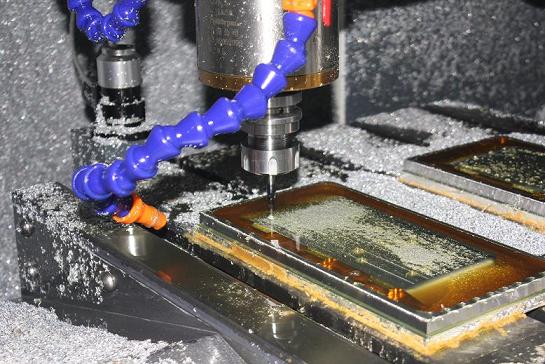
What are the types of thrust bearings?
Thrust bearing is a special sliding bearing, which is a double row cylindrical roller bearing composed of a pair of mutually meshing bearing parts. Thrust bearings have a simple structure and do not require lubrication or sealing to prevent contamination and corrosion. They are suitable for applications that bear large shaft loads but do not rotate at high speeds. Thrust bearings are divided into thrust ball bearings and thrust roller bearings.Thrust ball bearingThrust ball bearings mainly consist of a bearing seat and a set of spherical rollers. The inner ring has two spherical rolling elements, which are installed on both sides of the bearing seat. The rollers are connected to the raceway on the other end through the inner ring. The bearing seat is one of two cylindrical holes bolted to the base, with a rotatable bolt mounted on it. The cylindrical hole is cylindrical and has a certain distance between the two spherical rolling elements. It is the largest gap between the bearing seat and the spherical rolling elements. Spherical rollers are composed of a raceway with threads or gears connected to the spherical rolling element and in contact with the other end surface. Corresponding to the inner ring, the roller tooth shape is a semi-conical boss (or "concave spherical") ) instead of a truncated cone (or “convex spherical”).Thrust roller bearingThrust roller bearings are designed to meet the requirements of heavy and high loads. They have the characteristics of light weight, large load-bearing capacity, small friction factor, and wide temperature change range. Under heavy load, low speed or light load, the radial load can be maintained without axial movement, and it can withstand large axial loads. Thrust bearings are widely used in various machinery such as machine tool spindles, internal combustion engine blocks, ships, and automobile engines. In modern machine tools, the application of thrust bearings is quite common - usually multiple thrust bearings with two or three rollers can be used in machining centers, etc.
What are the types of thrust bearings?
Zhejiang waxing electromechanical co.LTD.2023-11-10 16:16:14
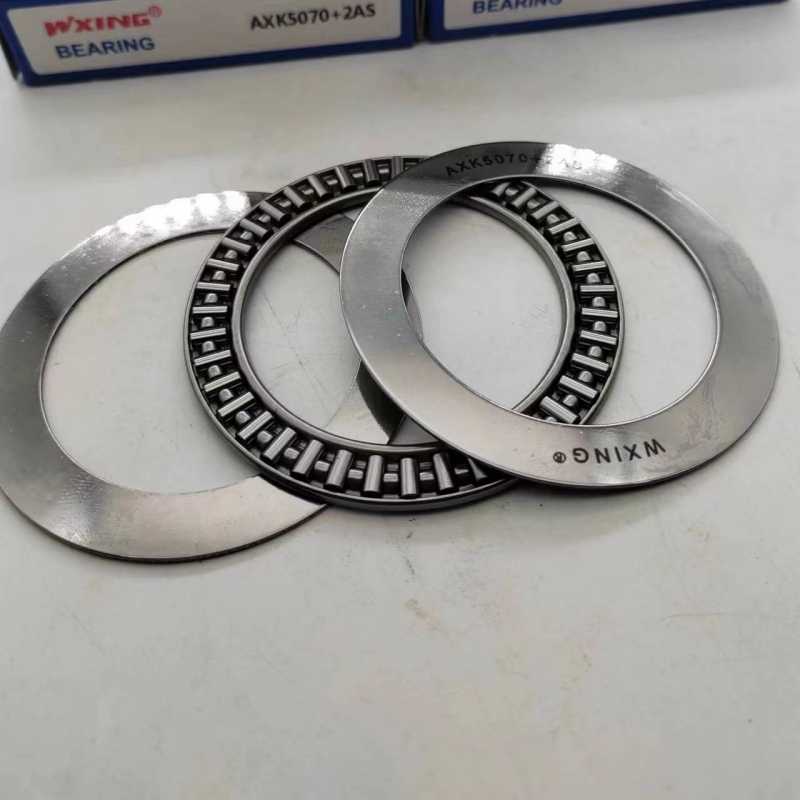
Hoprio Industrial Grade and Raiyon Professional Grade Brushless Power Tools were unveiled at the Mitex
The 2023 Russian International Hardware Tools Exhibition- MITEX will be held at the Ruby Pavilion in Moscow from November 7th to 10th. This time, Hoprio power Tools bring industrial-grade brushless power tools and the blockbuster new product Raiyon professional-grade brushless Angle grinder exhibited.At this exhibition, in addition to bringing industrial-grade brushless power tools, Raiyon also exhibited for the first time the Raiyon professional-grade brushless angle grinder specially developed for light grinding, which combines economical processing and high efficiency. Its higher metal grinding rate and high-voltage brushless frequency conversion intelligent control system provide stable performance under working conditions, making it a more cost-effective choice under comprehensive evaluation.Hoprio's products display attracted many new and old customers to come for consultation and negotiation. Raiyon's sales team warmly received each customer and patiently explained the product's technical features and application scenarios to customers.Compared with Hoprio industrial-grade brushless angle grinder, Raiyon professional grade brushless angle grinder focuses more on light grinding. Based on the success of past standard-size brushless angle grinders, the brushless angle grinder handle It is thinner, lighter in weight and smaller in size, which greatly reduces the burden of users working for a long time.As the leader of brushless power tools, Hoprio have a built-in high-voltage brushless frequency intelligent control system independently developed by Huapin. It is equipped with safety protection systems such as soft start, power-off protection, and overload protection. Compared with ordinary grinding tools, it realizes work The efficiency is increased by 30% and the grinding disc is saved by 35%, which greatly shortens the delivery cycle and reduces the company's operating costs.Hoprio will be committed to improving product research and development capabilities, brand strength, and after-sales service levels, further exploring the international market, and providing customers with more satisfactory services.
Hoprio Industrial Grade and Raiyon Professional Grade Brushless Power Tools were unveiled at the Mitex
Hoprio group2023-11-10 15:38:57

Hoprio Industrial Grade and Raiyon Professional Grade Brushless Power Tools were unveiled at the Mitex
The 2023 Russian International Hardware Tools Exhibition- MITEX will be held at the Ruby Pavilion in Moscow from November 7th to 10th. This time, Hoprio power Tools bring industrial-grade brushless power tools and the blockbuster new product Raiyon professional-grade brushless Angle grinder exhibited.At this exhibition, in addition to bringing industrial-grade brushless power tools, Raiyon also exhibited for the first time the Raiyon professional-grade brushless angle grinder specially developed for light grinding, which combines economical processing and high efficiency. Its higher metal grinding rate and high-voltage brushless frequency conversion intelligent control system provide stable performance under working conditions, making it a more cost-effective choice under comprehensive evaluation.Hoprio's products display attracted many new and old customers to come for consultation and negotiation. Raiyon's sales team warmly received each customer and patiently explained the product's technical features and application scenarios to customers.Compared with Hoprio industrial-grade brushless angle grinder, Raiyon professional grade brushless angle grinder focuses more on light grinding. Based on the success of past standard-size brushless angle grinders, the brushless angle grinder handle It is thinner, lighter in weight and smaller in size, which greatly reduces the burden of users working for a long time.As the leader of brushless power tools, Hoprio have a built-in high-voltage brushless frequency intelligent control system independently developed by Huapin. It is equipped with safety protection systems such as soft start, power-off protection, and overload protection. Compared with ordinary grinding tools, it realizes work The efficiency is increased by 30% and the grinding disc is saved by 35%, which greatly shortens the delivery cycle and reduces the company's operating costs.Hoprio will be committed to improving product research and development capabilities, brand strength, and after-sales service levels, further exploring the international market, and providing customers with more satisfactory services.
Hoprio Industrial Grade and Raiyon Professional Grade Brushless Power Tools were unveiled at the Mitex
Hoprio group2023-11-10 15:38:56

RUSSIAN INDUSTRIALIST INVITATION
RUSSIAN INDUSTRIALIST INVITATIONDear Partners,Rika Sensor will be present at the RUSSIAN INDUSTRIALIST at the ExpoForum, Peterburgskoe shosse 64/1, Saint-Petersburg, Russia from November 28 to November 30, 2023. We sincerely invite you to visit our booth. Thank you for your continued support, trust and understanding for RIKA SENSOR. May you find the right monitoring solution and have a good experience at this exhibition, we look forward to seeing you!Location: Pavilion F, ExpoForum, Peterburgskoe shosse 64/1, Saint-Petersburg, RussiaTime: November 28 - November 30, 2023Booth Numbers: C22Best Regards,Rika Sensor
RUSSIAN INDUSTRIALIST INVITATION
Hunan Rika Electronic Tech Co.,Ltd 2023-11-10 11:38:57
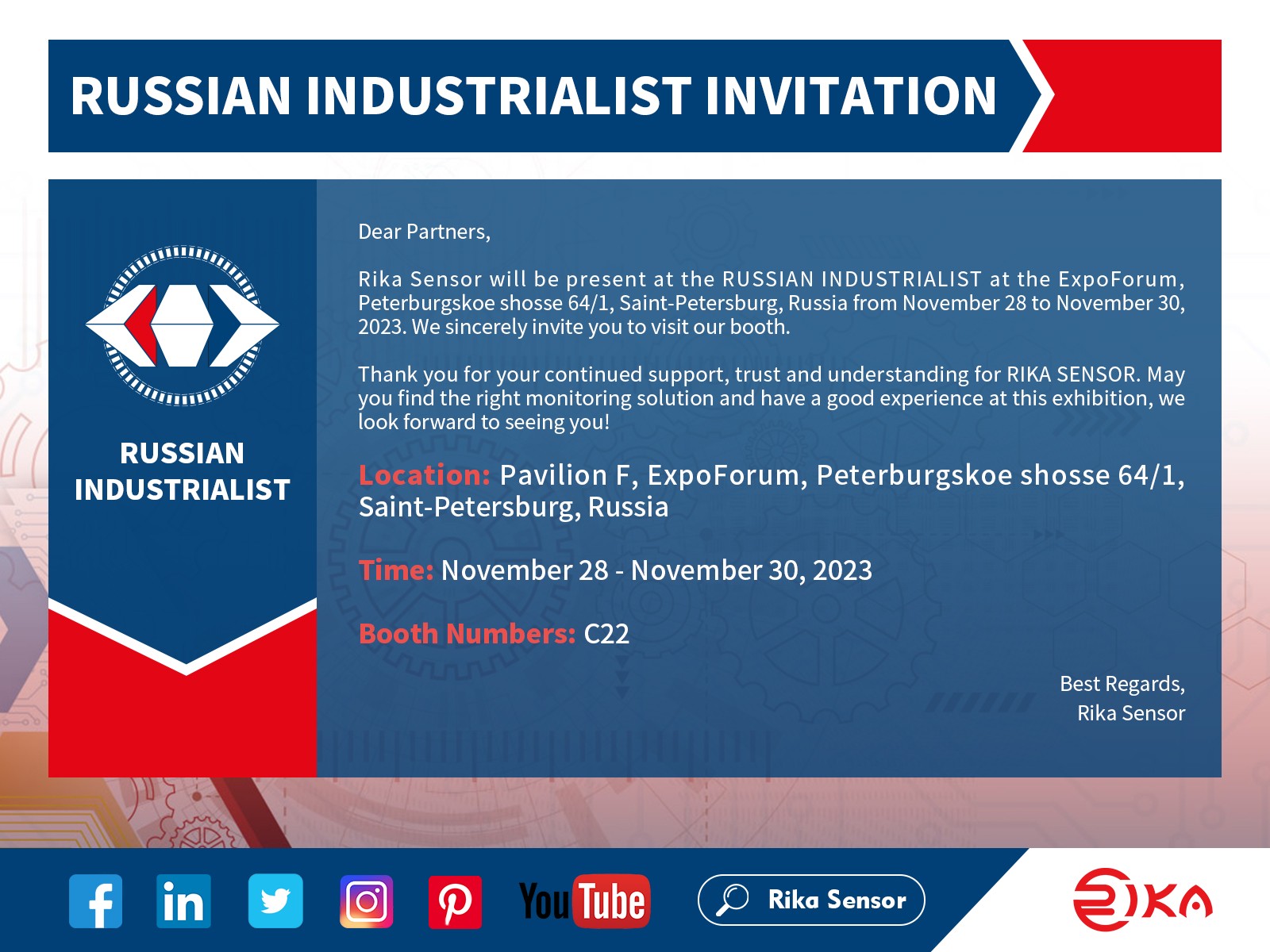
Types, working principles, advantages and limitations of Radar Level Transmitter
Understanding Radar Type Level TransmitterRadar type level transmitter is well known for their accuracy and effectiveness in measuring levels. They find use in industries such as petroleum, power plants and chemical processing as they greatly contribute to efficiency and safety. These transmitters operate based on the Time of Flight (TOF) principle. Can be divided into two categories; contact type radar level transmitters and non-contact type radar level transmitters.Contact Type Radar Level TransmittersContact type radar level transmitters consist of a transmitter connected to a probe that includes an antenna and a microprocessor. The antenna emits radar waves into the tank through the guiding probe. As these waves encounter the material, inside the tank some of them reflect back while others continue traveling towards the bottom of the tank.The remaining radar waves hit the bottom of the tank. Bounce back, to the transmitter creating an echo waveform. This echo waveform is crucial in determining the level of liquid or material inside the tank.Non Contact Type Radar Level TransmitterNon contact type radar level transmitters are simpler and consist of an antenna and a microprocessor. The antenna sends out radar waves into the tank, which then bounce back after hitting the material. The microprocessor calculates the distance by considering how long it takes for the radar waves to travel and knowing their speed.While non-contact radar level transmitters have advantages like installation, they do suffer from signal loss compared to guided wave radar transmitters. This signal loss happens because electromagnetic radiation tends to disperse into space. Guided wave radar transmitters solve this problem by using a probe that directs radio energy along a path. When using radar level transmitters it's important to consider the dielectric constant of the material being measured. For measurements there should be a difference, in dielectric constant typically ranging from 5 to 8 units. If this condition isn't met the radar will fail to generate an echo.Uses of Radar Level TransmittersThe applications of radar level transmitters are diverse and essential in industries. These versatile and precise instruments have proven their worth providing measurements and durability. Let's explore some areas where radar level transmitters are commonly used;Petrochemical and Chemical Processing; In the petrochemical and chemical sectors radar level transmitters excel at measuring types of liquids stored in tanks and vessels including chemicals and solvents. Their ability to withstand environments ensures the handling of volatile substances.Power Generation; Radar level transmitters are crucial for monitoring water levels in steam boilers, condensate tanks and cooling towers within power plants. Accurate measurements play a role in maintaining steam generation while preventing potential equipment damage.Food and Beverage; The food and beverage industry relies on radar level transmitters to measure levels in storage tanks. This helps ensure product quality by preventing overflows during production processes.Water Management; Radar level transmitters play a role, in monitoring water levels in reservoirs, sewage treatment plants and stormwater management systems. They facilitate water resource management while helping prevent flooding incidents.Mining Operations;Mining operations often involve the handling of materials including ores, slurries and tailings. Radar level transmitters play a role in measuring material levels in storage silos and tanks. This helps ensure material handling and reduces downtime.Paper Industry;In the pulp and paper industry radar level transmitters are used to measure levels of pulp and paper stock in storage tanks and paper machines. Precise level measurements are essential for maintaining product quality and minimizing production interruptions.Pharmaceutical industry The pharmaceutical industry heavily depends on radar level transmitters to ensure measurement of liquids and chemicals in processing and storage tanks. These examples highlight a few of the applications where radar level transmitters play an integral role. Radar level transmitters have become extremely valuable, across industries due to their ability to provide accurate and reliable level measurements in challenging conditions.Advantages of Radar Type Level TransmitterRadar level transmitters offer benefits that have contributed to their widespread adoption in different industries;Suitable for Corrosive Liquids; Non-contact radar level transmitters are particularly effective for liquids, making them well suited for demanding industrial environments.Versatility; These transmitters can measure levels of liquid, solid, slurry or interfaces providing flexibility for a range of applications.Low Maintenance Requirements; Since radar level transmitters do not have moving parts, maintenance needs are minimal. This reduces downtime and operational costs.Resistance to Factors; Measurements remain unaffected by variations in density, temperature and pressure.Accuracy & Responsiveness; Compared to measurement technologies radar type level transmitter offer accuracy and responsivenes, ensuring accurate monitoring.Limitations of Radar Type Level TransmitterDespite their advantages, engineers and operators should consider the following limitations associated with radar type level transmitter;Permittivity Sensitivity; Readings can be influenced by changes, in the permittivity of the material being measured which may lead to inaccuracies.Cleaning and Maintenance; When using radar transmitters it's important to keep in mind that if any material sticks, to the probe it can cause echoes and lead to faulty measurements. To avoid this, cleaning and maintenance of the probe are necessary.Interference Measurements; For measurements of interface echoes there should be a difference in the dielectric constant (around 5 to 8 units). If the difference is not significant enough there might be issues with measuring interface echoes.Installation and Troubleshooting; Installing and troubleshooting radar type level transmitters requires training and proprietary software. This adds complexity to the process.Calibration Challenges; Calibrating radar level transmitters can be a procedure that demands attention to detail in order to achieve accurate measurements.Conclusion;Radar level transmitters have brought advancements in level measurement across various industries due to their accuracy, versatility and ability to withstand environmental conditions. Whether its monitoring levels at power plants or managing chemical storage tanks these transmitters provide a solution. However, understanding their limitations and implementing proper installation and maintenance practices is crucial for making the most out of their capabilities. With improvements in radar technology, these transmitters are expected to continue playing a role in ensuring operational efficiency and safety across diverse industrial settings.
Types, working principles, advantages and limitations of Radar Level Transmitter
Guangdong Kaidi Energy Technology Co., Ltd.2023-11-09 17:49:44
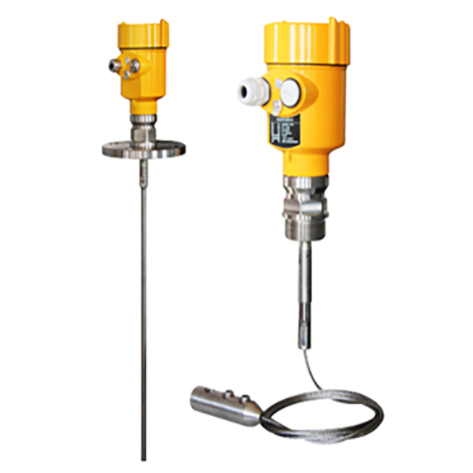
How to Machine Threads Using CNC
CNC (Computer Numerical Control) machining provides an accurate and efficient method for manufacturing threaded components. This article will guide you through the process of machining threads using CNC, ensuring precise and reliable thread production.1.Designing the Thread:Begin by designing the thread using Computer-Aided Design (CAD) software. Specify the thread type, size, pitch, and any other necessary parameters. Ensure the design aligns with your requirements and specifications.2.Material Selection:Choose the appropriate material for your project, considering factors such as strength, hardness, and machinability. Securely fix the material onto the CNC machine to prevent movement during the machining process.3.Selecting the Right Tools:Select the appropriate cutting tools for machining threads. Typically, a tap or a thread mill is used. Consider the material being machined and the desired thread specifications when choosing the tools.4.Programming the Machining Process:Utilize CNC programming software to create the machining program. Define the toolpath, thread type, dimensions, feed rate, and any other necessary parameters. The program is usually written in G-code, the language used to control CNC machines.5.Setting Up the Machining Process:Upload the machining program to the CNC machine and perform the necessary setup. This includes tool installation, workpiece alignment, tool length compensation, and setting the appropriate cutting parameters.6.Machining the Thread:Initiate the CNC machine and execute the machining program. The machine will accurately follow the programmed toolpath, creating the thread on the workpiece. The process may involve multiple passes to achieve the desired thread depth.7.Inspection and Verification:Once the machining is complete, inspect the thread for accuracy and quality. Measure the thread dimensions using appropriate measuring tools, such as thread gauges or micrometers, to ensure it meets the specified requirements.8.Post-Machining Processes:Depending on your project requirements, you may need to perform additional processes such as deburring, cleaning, or surface treatments to finish the threaded component.Conclusion:CNC machining is a reliable method for machining threads with precision and accuracy. By following the steps outlined in this article, you can successfully machine threads using CNC technology. Remember to consider material selection, tooling, programming, and setup to achieve the best results. Prioritize safety and acquire the necessary training and expertise before operating CNC machines.
How to Machine Threads Using CNC
Shenzhen Tuowei Model Technologies Co., Ltd.2023-11-09 17:36:07

Indian client visited Suncenter factory-20231106
**Forging Connections: A Visit from Esteemed Indian Clients to Dongguan Suncenter Fluid Control Equipment Co., Ltd.**Dongguan Suncenter Fluid Control Equipment Co., Ltd. extends a warm welcome to our esteemed clients from India who recently graced us with their presence for a comprehensive tour of our pneumatic booster pump manufacturing facility.Upon their arrival, our dedicated team at Suncenter greeted the Indian clients with enthusiasm, guiding them through a detailed exploration of our cutting-edge production lines and advanced manufacturing processes. Within the heart of our factory, clients had the opportunity to witness firsthand the technological prowess and ingenuity that define our pneumatic booster pumps. Our expert engineers provided insightful explanations regarding the design principles and technical nuances, addressing inquiries and earning commendation for our commitment to excellence.A highlight of this visit was the direct engagement between our guests and the Suncenter research and development team. This interactive session proved invaluableas clients shared their perspectives, contributing to a collaborative dialogue aimed at further elevating the performance and features of our products.Beyond the factory floor, cultural exchange activities and shared moments of gastronomic delight added a personalized touch to the visit, fostering a sense of camaraderie between our teams.As the visit came to a close, substantive business discussions ensued, covering future collaboration plans, customization requirements, and our unwavering commitment to comprehensive after-sales service. This sets the stage for a promising partnership between Dongguan Suncenter Fluid Control Equipment Co., Ltd. and our esteemed Indian clients.We express our deepest gratitude to our Indian counterparts for choosing to explore our facilities and products. Committed to delivering excellence, we eagerly anticipate the opportunities that lie ahead as we embark on a journey of mutual growth and success.
Indian client visited Suncenter factory-20231106
Dongguan Suncenter Fluid Control Equipment Co., Ltd2023-11-09 10:43:44

Vibration bearings
Vibration bearings are bearings specifically designed to reduce machine vibration and noise. It is different from ordinary bearings, which are usually equipped with many elastic elements, such as springs. When rotating, these elastic elements absorb vibrations and noise and prevent them from being transmitted to other parts of the machine. Therefore, vibration bearings are often used in machines with high-speed rotation and high-frequency vibration, such as aerospace engines and wind turbines.The main differences between vibration bearings and ordinary bearings are reflected in the following aspects:Structure and design: The structure and design of the vibration bearing are optimized for the vibration environment to cope with harsh working conditions such as vibration and shock. In contrast, ordinary bearings follow general engineering design points and pay more attention to the internal structure and specifications of the bearing.Material selection: Vibration bearings usually use particularly hard and wear-resistant materials, such as carbide, ceramics or special steels. These materials help bearings function properly under harsh conditions such as high pressure, high temperature and friction. Ordinary bearings generally use ordinary metal materials and have relatively low requirements on material quality and manufacturing process.Performance requirements: Since vibration bearings need to cope with harsher working environments, they have higher wear resistance and load-bearing capacity, as well as higher processing accuracy to ensure stability and long life. Ordinary bearings have relatively low performance requirements and are generally suitable for applications with smaller loads, lower speeds and less wear.
Vibration bearings
Zhejiang waxing electromechanical co.LTD.2023-11-09 09:29:22
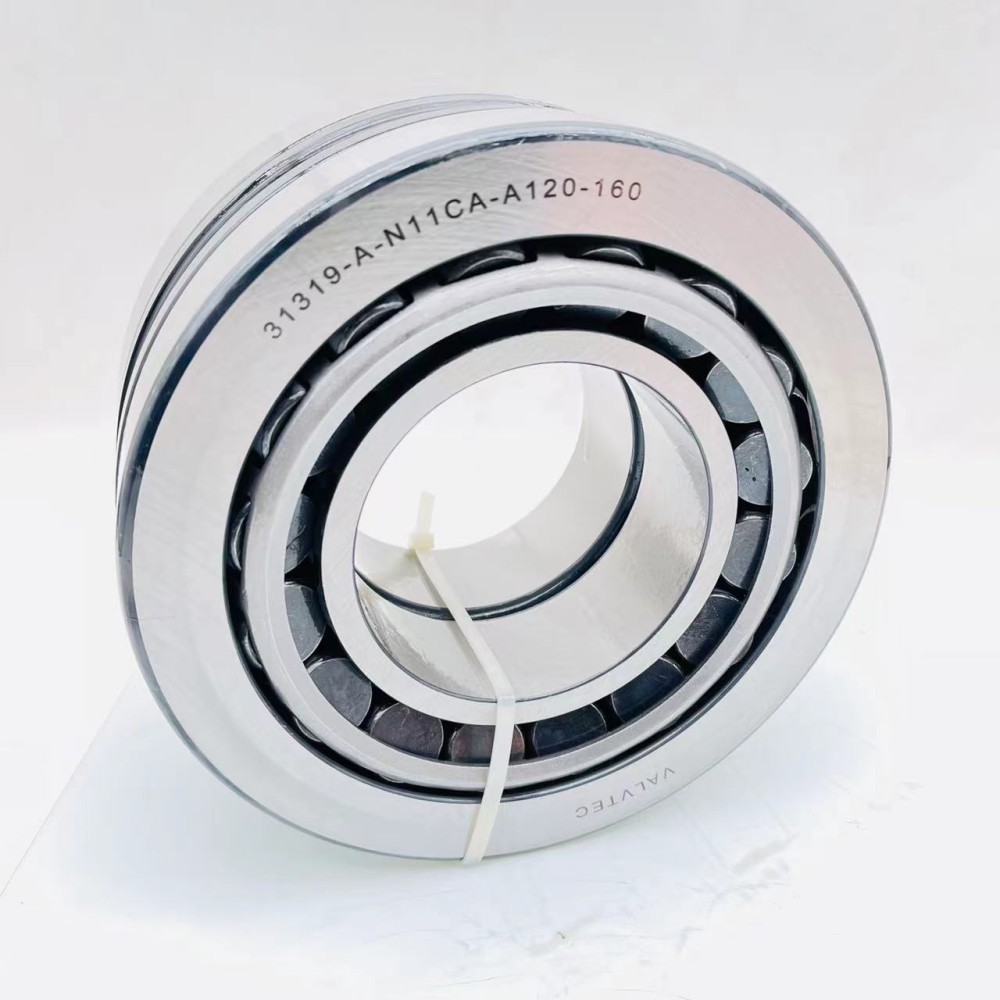
Egyptian Partners Explored GESTER in November
Egyptian Partners Explored GESTER in November A Warm Welcome: In the month of November, GESTER International Co., Ltd. had the honor of extending a warm welcome to our esteemed visitors from Egypt. As a prominent Chinese manufacturer and wholesaler specializing in physical testing instruments, we take great pride in sharing the highlights of this visit, which underscore its significance, achievements, and the exciting possibilities that lie ahead. Unveiling Our ExpertiseGESTER International Co.,Ltd is professionally engaged in production and R&D of physical properties testing equipment. With more than 20 years experience in research and development,we specialize in providing the total solutions of Textiles & Garments Testing Equipment, Footwear Testing Equipment, Protective and Mask Testing Equipment, Toys and Baby Stuff Testing. We remain steadfast in our pursuit of offering dependable solutions for quality control and testing requirements. Unpacking the Essence of the Visit Establishing Valuable Bonds: An essential aim of this visit was to nurture strong and enduring relationships with our Egyptian partners. This objective was met through a genuinely hospitable reception by the GESTER team, an approach aimed at cultivating trust and building enduring bonds that form the bedrock of long-term cooperation.Knowledge Sharing: The visit served as a platform for the exchange of knowledge, fostering a dynamic dialogue between our technical experts and our esteemed Egyptian guests. Insights, best practices, and industry insights were shared with the intent of deepening our visitors' comprehension of testing processes, while also laying the groundwork for mutual understanding.Live Product Exhibitions: To underscore the excellence and precision of our products, we conducted comprehensive live demonstrations. These immersive showcases provided our Egyptian counterparts with firsthand exposure to the capabilities of our physical testing instruments, reinforcing our commitment to quality.Tailoring Solutions: In-depth discussions with our guests enabled us to gain valuable insights into their distinct testing requisites. This newfound comprehension positions us to design personalized solutions that cater to their unique needs, underlining our dedication to addressing the specific demands of the Egyptian market. Envisioning Future Collaborations Forging Supply Pacts: GESTER stands ready to establish supply agreements, assuring our Egyptian partners access to cutting-edge testing equipment. This endeavor empowers our clients to elevate the quality of their products and meet global standards, with our state-of-the-art instruments by their side.Continued Technical Assistance: Our unwavering commitment extends to delivering sustained technical support, training, and comprehensive after-sales service.Research and Development Synergy: Collaborative research endeavors can be undertaken to tackle specific testing challenges identified by our Egyptian counterparts. These cooperative efforts may yield innovative solutions and technological breakthroughs that directly benefit our clients. ConclusionIn summary, the November visit marked a pivotal stride in fortifying our ties with our Egyptian partners. The groundwork has been laid for a promising future of collaboration, and we eagerly anticipate exploring these avenues. Our shared mission remains to contribute to the advancement and success of our clients, providing steadfast and pioneering testing solutions to industries across the globe.
Egyptian Partners Explored GESTER in November
GESTER International Co.,Limited2023-11-08 16:48:58
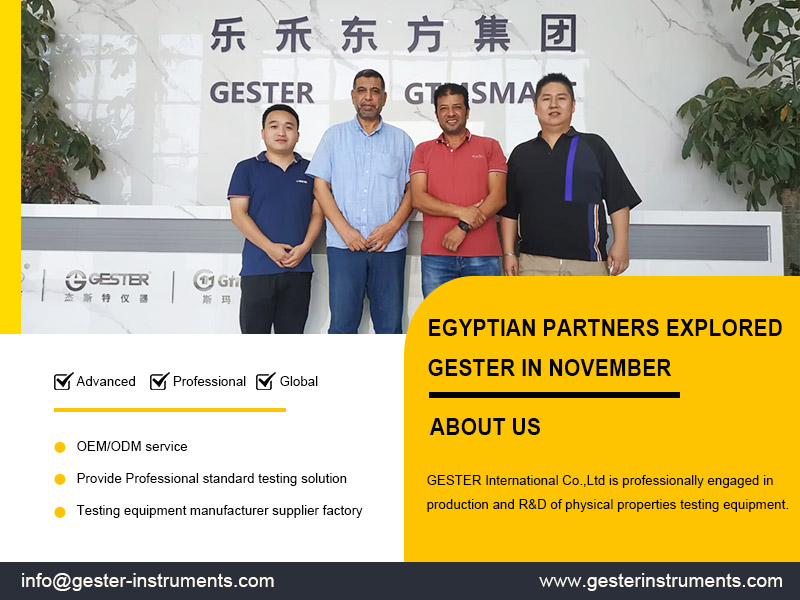
How many steps are there to use field radar level meter failure analysis?
I. Check whether the communication equipment is normalOnce found that the communication equipment is not normal, you can monitor the status of the radar sensor by installing the radar debugging software and reading the configuration data of the radar. Mainly check the radar sensor can accurately determine the difference between the reflected echo and false echo, whether the intensity of the reflected wave reaches the predetermined standard, if the above test is not a problem, it is necessary to check the other electronic components, if it is judged that the radar level meter communication unit is damaged, it is necessary to replace the components as appropriate to ensure that the radar level meter communication is normal.2. check whether the power supply is normalIf the production site found that the radar level meter in the liquid level rises to a certain value after the change is very slow, you should immediately check the radar level meter power supply is normal, the relevant staff should also be in the daily maintenance, detailed check of the radar level meter of the power supply, power supply with or without normal output. Liquid level changes slowly or no change at all, you need to check the first time whether the fuse of the equipment is blown, if there is no current output, you can basically judge that the instrument is a problem, should be replaced or repaired depending on the situation.3. Inaccurate display valueInaccurate display value is a common problem of radar level meter, the cause of inaccurate display value, may be the initial setting of the contrast is not appropriate, or because the display module plug-in connection is incorrect, the relevant staff should try to avoid this problem, once found that the display value is not visible, should be the initial setting of the radar level meter should be checked and check the display module plug-in connection is normal, if the two are normal, then need to check in-depth whether the output current is normal, if the output current is greater than 22mA, then it can be judged to be a failure of the radar level meter display module. These two items are displayed normally, then you need to deeply check whether the output current of the radar level meter is normal or not, if the output current is greater than 22mA, it can be judged to be the display module of the radar level meter is faulty, and it needs to be replaced in time. If the output current is less than 3.5mA, it can be judged that the electronic module of the radar level meter is faulty, and it is necessary to replace the electronic module of the radar level meter in time.4. The system displays error messagesThe radar level meter system often displays error messages, generally leading to this failure is due to data storage before the end of the power cut off, the need for calibration reset and re-calibration. If the alarm is still issued after calibration reset and recalibration, the electronic module of the radar level meter needs to be replaced.5. Antenna staining, crystallizationTreatment of light pollution tank failure, should first consider the possibility of antenna staining, crystallization, the treatment method is, after power failure, wear appropriate protective equipment, remove the radar tilt down, wipe off the dirt or crystallization with a rag, do not let the antenna bending damage, pay attention to the light take light, do not scrape the iron, so as not to damage to the antenna skin.6. Diffuse reflectionIf there is a low level or no level, the biggest reason may be the bottom of the test container with brackets, pipes, or in the process of steam, the radar wave formed by the diffuse reflection and lead to level failure, at this time, you can wait until the process level is normal, restart will be automatically restored. In this case, you can wait until the process level is normal, restart will be automatically restored. And due to the diffuse reflection caused by steam, the temperature will be automatically restored after the normal.
How many steps are there to use field radar level meter failure analysis?
Guangdong Kaidi Energy Technology Co., Ltd.2023-11-08 14:45:28

What are the ways to prevent grinding burns on rolling bearing sleeves?
1. Select a suitable grinding wheel: Choose a grinding wheel with moderate hardness and moderate structure number to ensure grinding efficiency and bearing accuracy while reducing friction heat between the grinding wheel and the workpiece.2. Control the grinding thickness: Reducing the grinding thickness can reduce metal plastic deformation and internal friction, thereby reducing the generation of friction heat.3. Increase the workpiece speed: Increasing the workpiece speed can shorten the time for the grinding surface of the workpiece to pass through the grinding area and reduce the accumulation of friction heat.4. Control the feed rate: For materials with high grinding strength, high hardness and poor thermal conductivity, a smaller feed rate should be used to improve grinding efficiency and avoid burns.5. Adequate cooling: Using sufficient cutting fluid during the grinding process can effectively reduce the grinding temperature and reduce the possibility of burns.6. Standardized operation: Strictly abide by the operating procedures to avoid grinding burns caused by improper operation.Please note that in actual operation, parameters and operating methods should be adjusted according to specific conditions to achieve the best results.
What are the ways to prevent grinding burns on rolling bearing sleeves?
Zhejiang waxing electromechanical co.LTD.2023-11-08 09:50:34
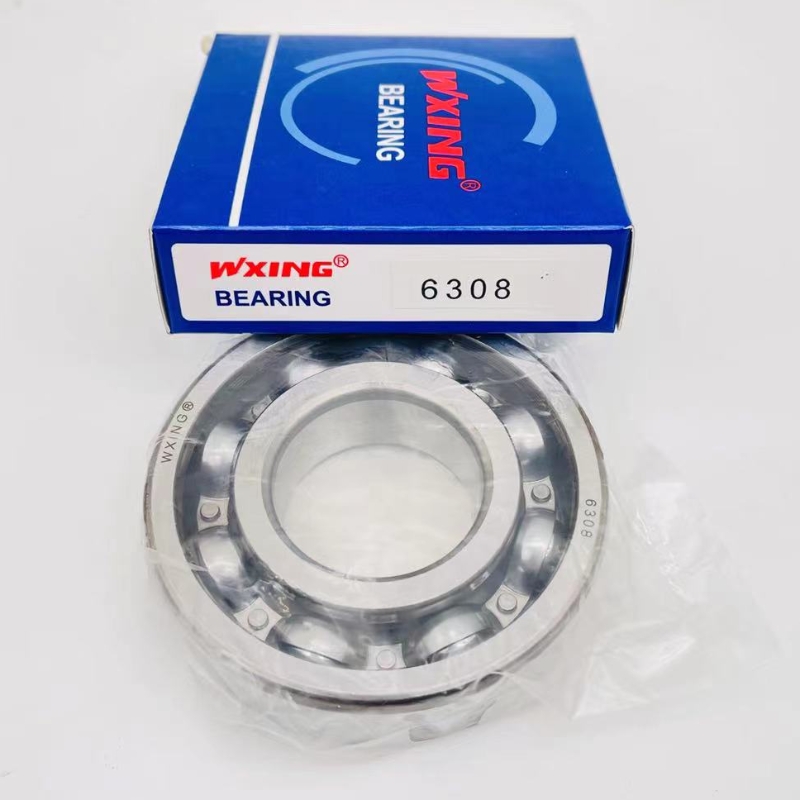
Radar Level Switches: Transforming Industrial Level Measurement with Innovations
The Advancement of Radar Level SwitchesRadar level switch have revolutionized industrial level measurement, here’s an insight into how these tools are changing the industrial world;A Paradigm Shift in Level MeasurementRadar level switches represent a departure from traditional measurement techniques. They leverage microwave technology to provide measurements, completely transforming how industries approach level monitoring. By eliminating the need for contact with materials they introduce an era of versatility and reliability.Innovations in Microwave TechnologyThe core of radar level switches is based on advancements in microwave technology. These innovations have significantly enhanced the efficiency of radar switches enabling them to tackle measurement scenarios effectively. By harnessing the potential of microwave frequencies they have expanded their range of applications.Exploring Recent InnovationsThe advancements in radar level switches have taken them to heights. From signal processing algorithms to construction materials these devices continue to evolve and meet the diverse challenges of various industries.Advantages of Modern Radar Level SwitchesHere are some of the many ways these amazing tools are helping us;Durability in Challenging EnvironmentsModern radar level switches showcase durability in harsh environmental conditions. They remain unaffected by temperature, pressure variations or changes in gas and vapor composition. This adaptability ensures performance in demanding industrial settings.Accurate Measurements for Different MaterialsRadar switches have mastered the art of measuring materials with varying properties. They effortlessly handle changes in density, conductivity or dielectric constant making them well suited for a range of substances. Whether its liquids, powders or granular solids radar switches consistently provide readings.Effortlessly Handling Complex EchoesIndustrial processes often involve echoes and false readings that can result in measurement inaccuracies. Modern radar level switches excel at managing these complexities. With echo processing capabilities, they effectively differentiate between level changes and spurious signals ensuring highly accurate measurements.Achieving Continuous Safety with Non-Contact MeasurementThe non-contact aspect of radar measurement not only improves accuracy but also prioritizes safety. By eliminating probes that can corrode or get clogged these devices ensure a measurement process especially when handling corrosive or viscous materials.The Technological Core of Modern Radar Level SwitchesRadar level switches operate on an ingenious principle. They emit microwave signals in the gigahertz frequency range towards the surface of the material inside a container. By measuring the time it takes for these signals to bounce back from the materials surface the device accurately calculates its distance.A feature of radar switches is their ability to maintain precision through automatic temperature compensation. A part of the radar transmission pulse acts as a reference pulse ensuring that changes in temperature within the microwave module circuits do not affect measurement accuracy. This functionality guarantees performance in changing conditions.The distance measurement capability is one of the standout features of level switch radar. This versatility makes them useful for applications ranging from monitoring chemical reactions, in tanks to ensuring quality control during food and beverage processing.Their ability to accurately measure distances is a demonstration of their reliability in settings.Innovations in Radar Level Switch ApplicationsChemical Processing; Prioritizing SafetySafety is crucial in the chemical industry during reactions. Advanced radar level switches offer real time data without any contact ensuring the safety of operators and equipment.Oil and Gas; Confronting Extreme ChallengesOperating in challanging environments, the oil and gas sector relies on radar switches for measurements even under extreme conditions such as high temperatures, pressures and corrosive elements.Food and Beverage; Safeguarding QualityMaintaining product quality is paramount in the food and beverage industry. Radar switches, with their non-contact approach, contribute to preserving the integrity of ingredients and final products.Water and Wastewater Treatment; Ensuring Clean Water SupplyWater treatment facilities depend on radar float level switch to monitor water levels in tanks and basins. These devices play a role in ensuring that clean water is readily available for communities.Pharmaceuticals; Precision in Medicine ManufacturingPrecision is crucial in medicine production. Radar switches provide accurate level measurements at stages of drug manufacturing, upholding quality standards.Bulk solids handling; From agriculture to miningThe versatility of radar switches extends to a range of applications from handling grains in agriculture to managing minerals in mining. Their non-contact nature minimizes the need for maintenance and maximizes efficiency.Conclusion: Innovating for a future in the industrial sectorThe journey of radar level switches is characterized by innovation and adaptability. These devices continuously evolve to meet the changing demands of processes.Efficiency, safety and precision are aspects of industrial operations. Radar level switches embody these principles through their innovation establishing themselves as tools across various sectors.As industries progress, their requirements for accurate level measurement also advance. With a focus on innovation, level switch radar are at the forefront of shaping the future of industrial level measurement. They contribute significantly to achieving safer and precise processes.
Radar Level Switches: Transforming Industrial Level Measurement with Innovations
Guangdong Kaidi Energy Technology Co., Ltd.2023-11-07 15:19:13
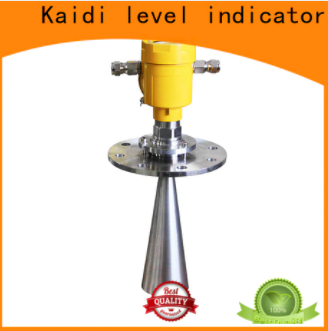
How to Machine Small Holes Using CNC
CNC (Computer Numerical Control) machining is a highly accurate and efficient method for manufacturing various components, including small holes. This article will guide you through the process of machining small holes using CNC, ensuring precision and reliability in your production.1.Designing the Hole:Start by designing the small hole you want to machine using Computer-Aided Design (CAD) software. Specify the dimensions, tolerances, and any other requirements for the hole.2.Material Selection:Choose the appropriate material for your project, considering factors such as strength, hardness, and machinability. Ensure the material is securely fixed on the CNC machine to prevent movement during the machining process.3.Selecting the Right Tools:Select a suitable cutting tool for machining small holes. Typically, a drill bit or an end mill with a small diameter is used. Consider the material being machined and the required hole specifications when choosing the tool.4.Programming the Machining Process:Use CNC programming software to create the machining program. Define the toolpath, hole diameter, depth, feed rate, and any other necessary parameters. The program is typically written in G-code, a language that controls the CNC machine.5.Setting Up the Machining Process:Upload the machining program to the CNC machine and perform the necessary setup. This includes tool installation, tool length compensation, workpiece alignment, and setting the appropriate cutting parameters.6.Machining the Small Hole:Initiate the CNC machine and execute the machining program. The machine will accurately follow the programmed toolpath, gradually creating the small hole in the workpiece. The process may involve multiple passes to achieve the desired hole depth.7.Inspection and Verification:Once the machining is complete, inspect the small hole for accuracy and quality. Measure its dimensions using appropriate measuring tools, such as calipers or micrometers, to ensure it meets the specified requirements.8.Post-Machining Processes:Depending on your project requirements, you may need to perform additional processes such as deburring, cleaning, or surface treatments to finish the small hole.Conclusion:CNC machining is a reliable method for machining small holes with precision and accuracy. By following the steps outlined in this article, you can successfully machine small holes using CNC technology. Remember to consider material selection, tooling, programming, and setup to achieve the best results. Always prioritize safety and acquire the necessary training and expertise before operating CNC machines.
How to Machine Small Holes Using CNC
Shenzhen Tuowei Model Technologies Co., Ltd.2023-11-07 11:36:35

How to Machine Patterns Using CNC
CNC (Computer Numerical Control) machining is a versatile and precise method for manufacturing various types of patterns, including intricate designs and textures. This article will guide you through the process of machining patterns, specifically focusing on creating web patterns using CNC.1.Designing the Web Pattern:To begin, create or download a suitable web pattern design using Computer-Aided Design (CAD) software. Ensure that the design aligns with your requirements and specifications.2.Preparation:Choose the appropriate material for your project and securely fix it onto the CNC machine. It is crucial to ensure that the material remains stable throughout the machining process to avoid any movement or vibrations.3.Programming the Machining Process:Utilize CNC programming software to write the machining program. In the program, define the shape, dimensions, and tool paths for the web pattern. Typically, these programs are written using G-code, a command language used to control CNC machines.4.Setting Up the Machining Process:Upload the machining program to the CNC machine and make the necessary setup adjustments. This includes configuring the tools, tool paths, cutting parameters such as feed rate and cutting speed, and any other relevant settings.5.Machining the Web Pattern:Initiate the CNC machine and execute the machining program. The machine will follow your programmed instructions to control the tool and cut the web pattern shape onto the workpiece.6.Inspection and Adjustment:Once the machining process is complete, inspect the quality and accuracy of the web pattern. If required, make any necessary adjustments or corrections to ensure it meets your desired specifications.Conclusion:CNC machining offers an efficient and accurate method for creating web patterns. By following the steps outlined in this article, you can successfully machine intricate and precise web patterns using CNC technology. Remember to prioritize safety and acquire the necessary training and expertise before operating CNC machines.
How to Machine Patterns Using CNC
Shenzhen Tuowei Model Technologies Co., Ltd.2023-11-07 11:21:41
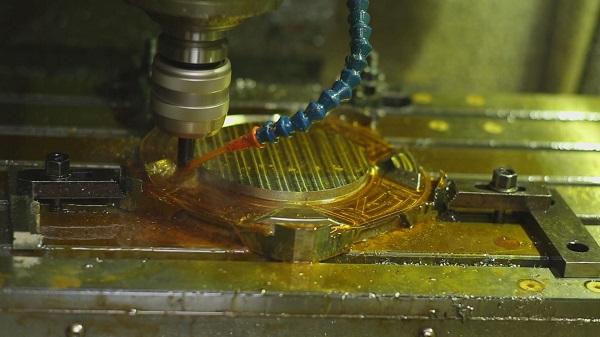
How to check the lubrication status of bearings during operation?
Inspection items during operation include rolling sound, vibration, temperature, lubrication status of the bearing, etc. The specific conditions are as follows:1. The rolling sound of bearingsUse a sound detector to check the size and sound quality of the rolling sound of the running bearing. Even if the bearing is slightly damaged such as peeling, it will emit abnormal sounds and irregular sounds, which can be distinguished with a sound detector.2. Vibration of bearingsBearing vibration is very sensitive to bearing damage, such as peeling, indentation, rust, cracks, wear, etc., which will be reflected in the bearing vibration measurement. Therefore, the size of the vibration can be measured by using a special bearing vibration measuring instrument. The specific circumstances of the anomaly cannot be inferred. The measured values vary depending on the operating conditions of the bearing or the installation position of the sensor. Therefore, it is necessary to analyze and compare the measured values of each machine in advance to determine the judgment criteria.3. Bearing temperatureThe temperature of the bearing can generally be estimated from the temperature outside the bearing chamber. It would be more appropriate if the oil hole can be used to directly measure the temperature of the bearing outer ring. Usually, the temperature of the bearing begins to rise slowly with operation and reaches a stable state after 1-2 hours. The normal temperature of bearings varies depending on the machine's heat capacity, heat dissipation, rotation speed and load.If the lubrication and mounting parts are appropriate, the bearing temperature will rise sharply and abnormally high temperatures will occur. At this time, the operation must be stopped and necessary preventive measures must be taken. Thermal sensors can be used to monitor the operating temperature of the bearing at any time, and automatically alarm the user or stop when the temperature exceeds the specified value to prevent shaft burning accidents.
How to check the lubrication status of bearings during operation?
Zhejiang waxing electromechanical co.LTD.2023-11-07 10:17:42
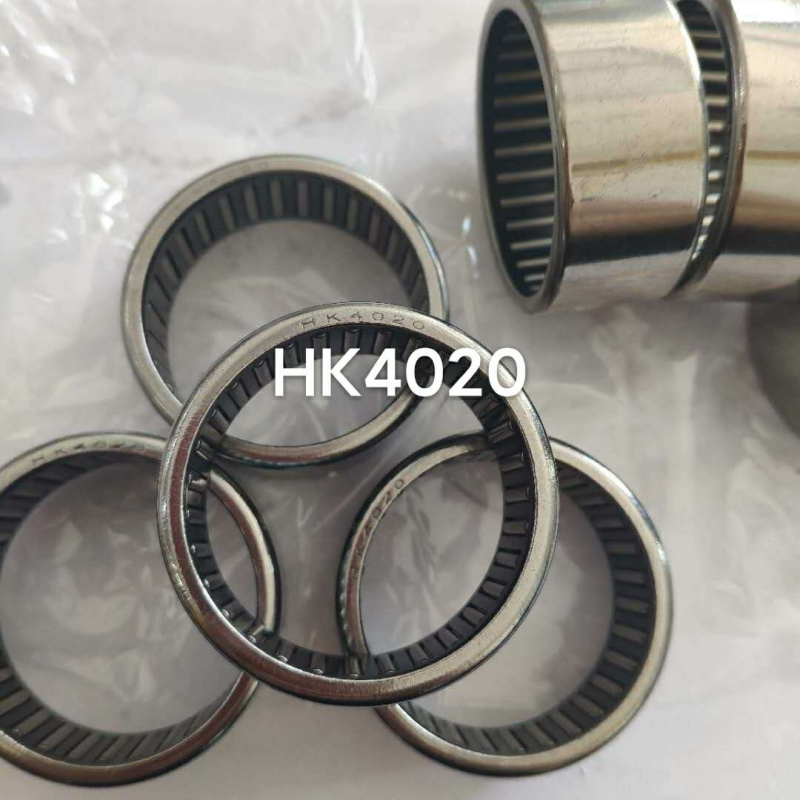
You may also like

Best Quality Square Interlocking RC123006 Slide Retainer High Precision Injection Mold Parts Factory

Folding Shelf Brackets

Customized Non-standard mold parts For plastic injection Mold manufacturers From China | BAITO

Customized Toothed-Plate Connector Manufacturers From China

Customized Non-standard mold parts For plastic injection Mold manufacturers From China | BAITO

Customized Bike Rack manufacturers From China

Metal Web Joists

Quality Non-standard mold parts For plastic injection Mold Manufacturer | BAITO

Best Non-standard mold parts For plastic injection Mold Company - BAITO

Customized Non-standard mold parts For plastic injection Mold manufacturers From China | BAITO